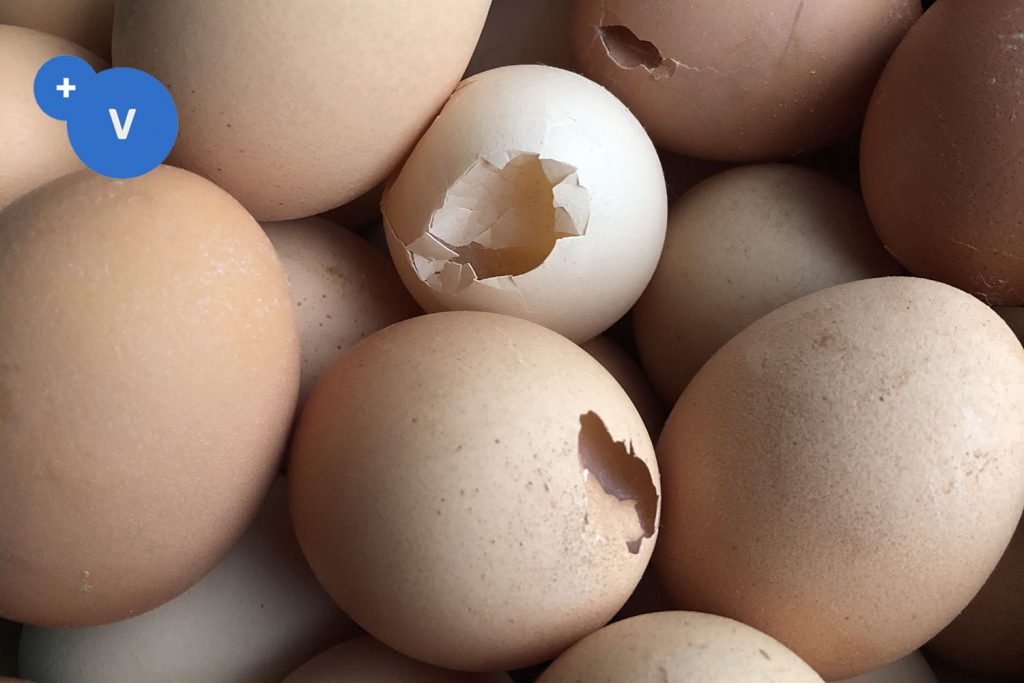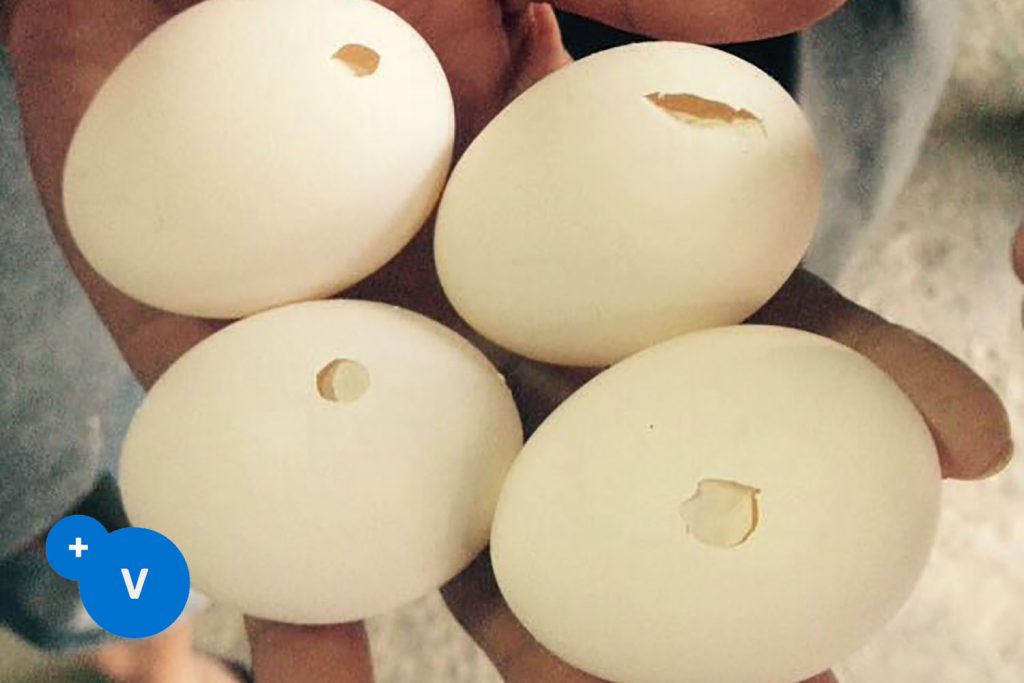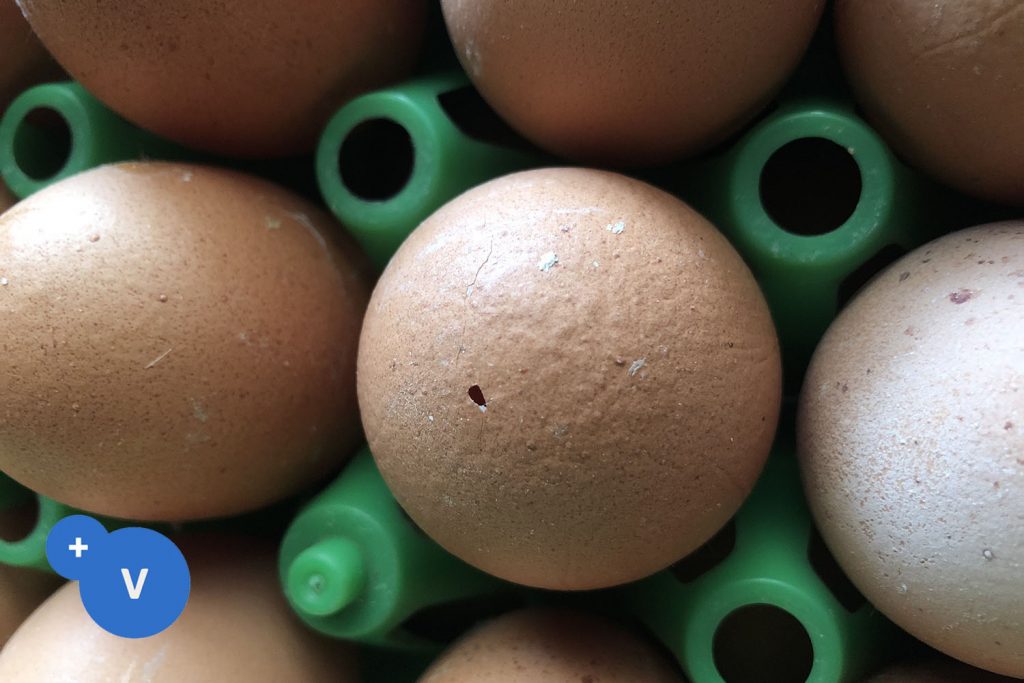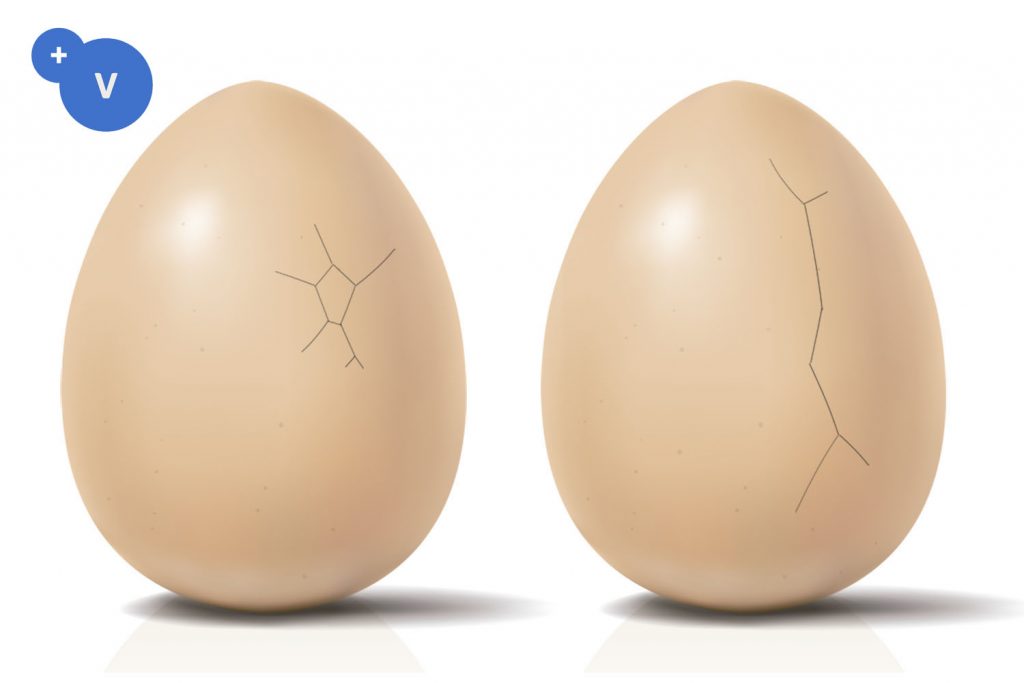IN OTHER LANGUAGES

The eggshell provides mechanical protection to the content of the egg and acts as a barrier against microbial infections. It should look clean, smooth, homogeneous, and free of cracks.
Cracked or broken eggs are prone to microbial contamination, posing a threat to consumer health (table eggs) or having a significantly reduced hatchability (fertile eggs). In general, 3% to 6% of the total eggs laid are discarded due to breakage.
Damages to the eggshell can be classified as gross cracks, where both the shell and the shell membrane are cracked, and microcracks, where the shell is broken, but the egg membrane is not damaged.
The breakages are visible to the naked eye.
Main causes:

Pinholes are gross cracks but have a particular shape: a round, small hole, sometimes with small cracks around it.
Causes:

Microcracked eggs are difficult to identify, often the damages are not visible to the naked eye, especially when the egg is fresh. As a result, microcracked eggs are often sent to the table egg market or to incubation. There are two types of microcracks:

Both types are caused by collisions with hard surfaces or between eggs. Any condition that makes the eggshell weaker will increase the percentage of microcracked eggs, for example:
PlusBreathe© contains essential oils with natural antiseptic, antioxidant, expectorant and mucolytic activity. It has a refreshing taste.
It is indicated to improve the functioning of the respiratory system and to mitigate heat stress in birds, ruminants, pigs and rabbits of all ages. It can also be nebulized in the farm environment.
PhytoMax© is a combination of vitamins, chelated calcium, microminerals and essential oils to be given through drinking water. It is intended for layers and breeders to:
PlusBind© is a mixture of carefully selected silicates intended for the prevention of diseases and productivity losses related to the presence of all types of mycotoxins. It is indicated in poultry, pigs, aquaculture and ruminants.
The silicates present in PlusBind© have a highly expandable molecular structure. This characteristic gives the product a wide surface available for the adsorption of mycotoxins and therefore allows a high effectiveness at lower doses (0.5-1 kg per ton of feed).

Certain health statements may not be applicable in your region.